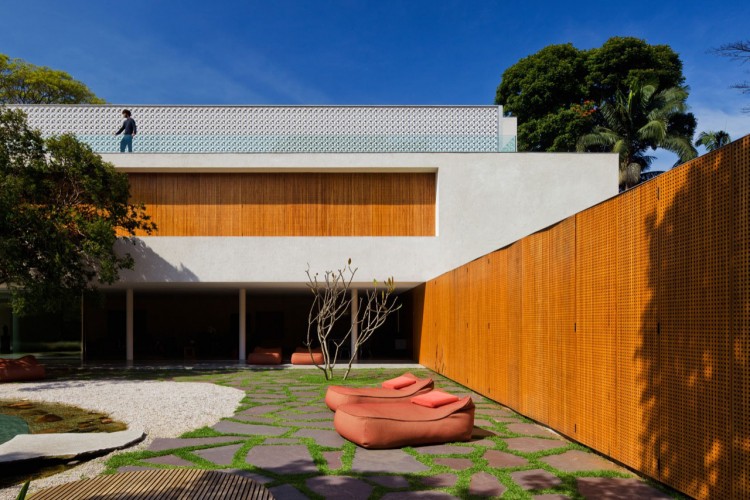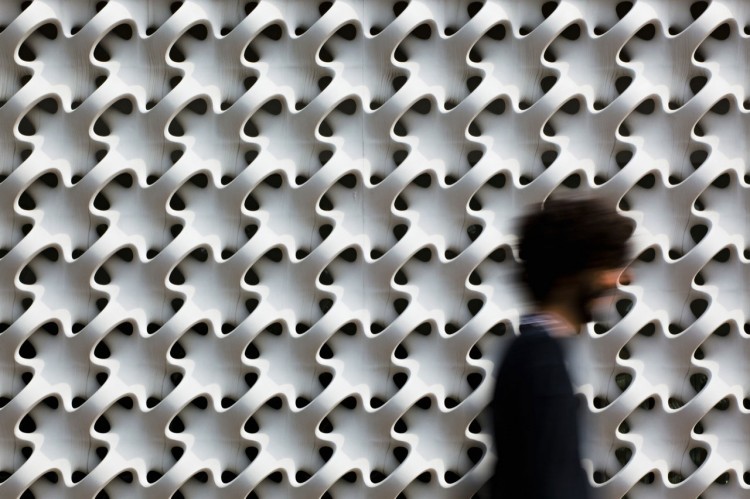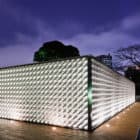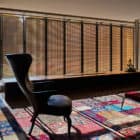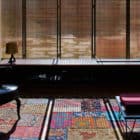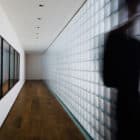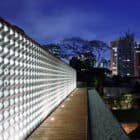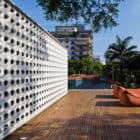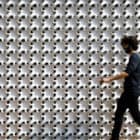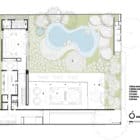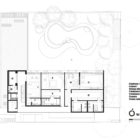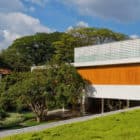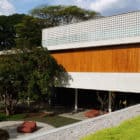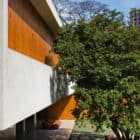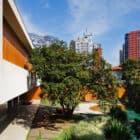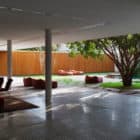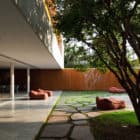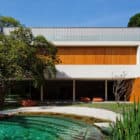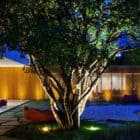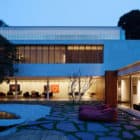Sao Paulo-based architect Marcio Kogan and his architecture firm Studio MK27 have completed the Cobogó House project.
This three-story contemporary home is located in São Paulo, Brazil.
Cobogó House by Marcio Kogan:
“The light of the abundant tropical Sun falls on the white volume of the top floor of the house, penetrating the holes of the hollowed elements and covering the floor of the interior space. Thus, the design of spatialized lace is formed from the shadows and solar rays. The effect is multiplied throughout the ambient, making a construction from the light itself. Throughout the days, throughout the months, the hollowed-out elements take on different forms with the incidence of the sun; at night, this effect once again is transformed; in a continuous process of metamorphosis, its form changes from the light.
The soft volumetric geometry of the hollowed-out elements comprising the walls is a complex construction, made with infinite curved lines. The modular element, a work of art, was designed by the Austrian-American Erwin Hauer who, since 1950, has conceived and made sculptures for architectural space. His minimalist elements dialogue with the architecture and remind us of some traces of Brazilian modern architecture. The curved lines, designed with perfection nod to the architecture of Brasilia by Niemeyer; furthermore, the concrete modules descend from the Cobogós, which lends its name to the house, created in Recife and diffused by Lucio Costa in delicate references to colonial architecture.
The Cobogó House is a modern house in which the art of Erwin Hauer can be used naturally, as a part of the entire architecture. In the play of mounting pure volumes, made of white spackling paste, concrete and wood; lies, together with the terrace garden, the volume constructed from the hollowed elements by Erwin Hauer. Inside this space, there is a multiple-use living room and a small spa.
On the ground floor the living room connects entirely with the garden, where there is a small artificial lake. Fish and plants help maintain the biological balance of the pool without the use of chemical products that assail the environment. This environmental thought permeated the entire project which incorporated principles of sustainability established by rigid standards, similar to certifications. In the house, there is a great concern to use recycling apparatus and reduce water consumption; rationalize and organize the construction to minimize the impacts; use devices for energy efficiency and optimization; install solar heating plaques; besides using only certified, recycled or ecologically correct material. The use of this knowledge together with architecture that respects the local climate resulted in a house having excellent inner comfort.
In both the back living room, which on one side opens to a large front garden and on the other to a patio of trees, and the bedrooms, the inner ambients are shaded by wooden mashrabiyas that make possible good ventilation with internal shading. The panels can open entirely as can the floor-to-ceiling sliding glass doors, diluting, in this way, the transition between internal and external space. On the last floor, the work of art thought of as architectural space is the symbol of the house which, just as the enormous Jabuticabeira of the garden, constructs a singular space and a reflexive atmosphere that invokes a brief contemplative silence.”
Photos by: Nelson Kon
Source: ArchDaily



